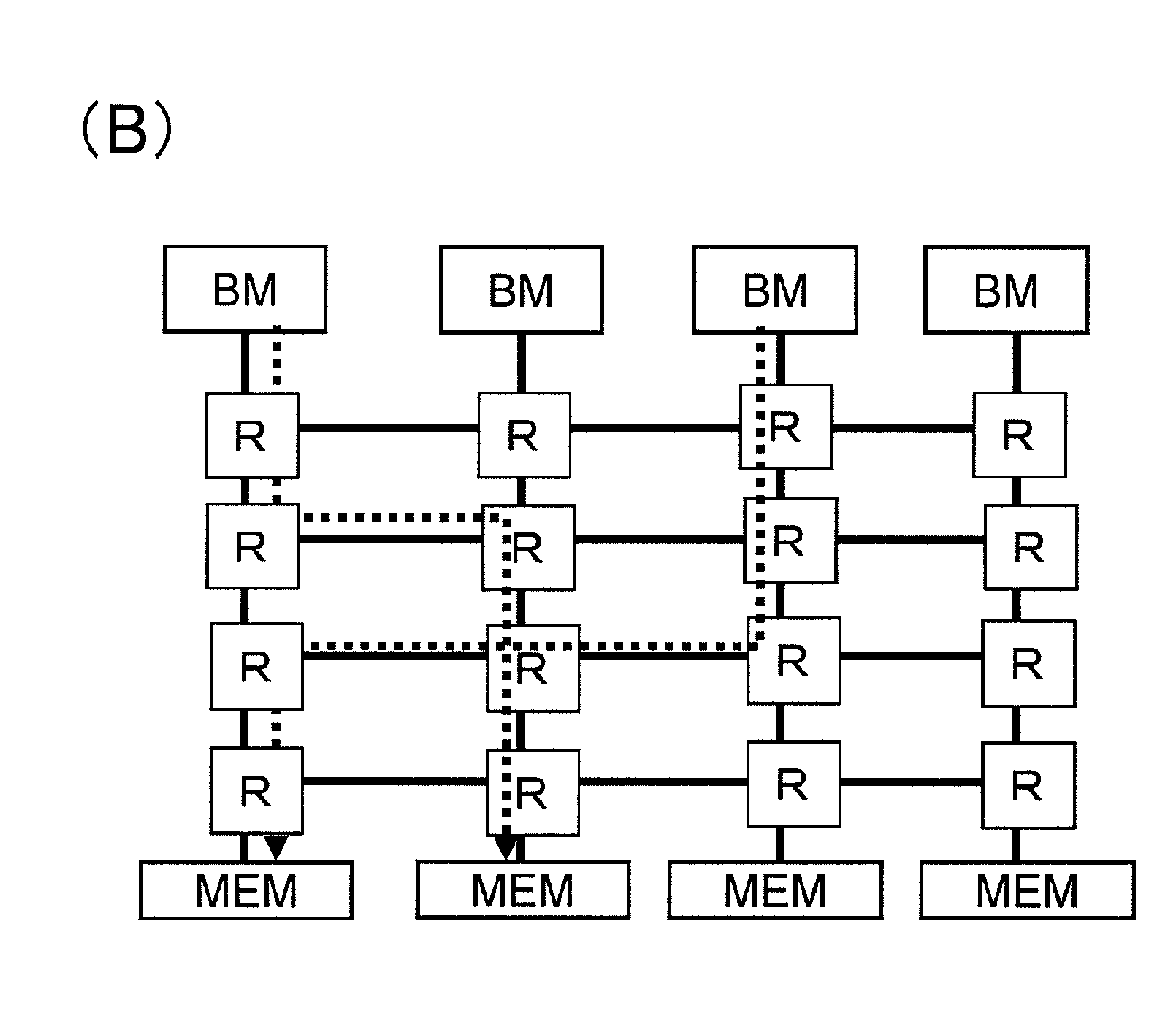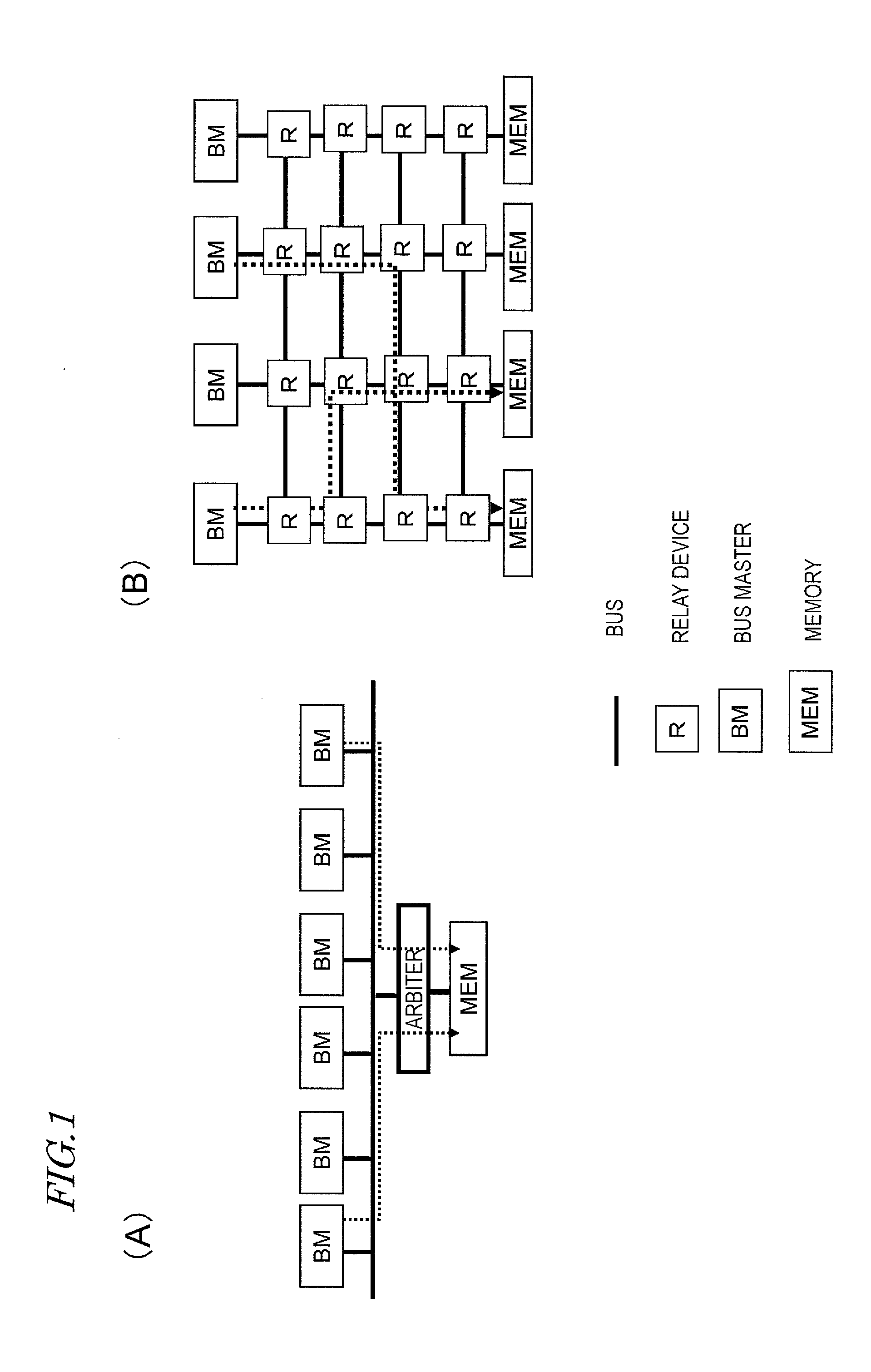Relay device
- Summary
- Abstract
- Description
- Claims
- Application Information
AI Technical Summary
Benefits of technology
Problems solved by technology
Method used
Image
Examples
embodiment 1
[0088]FIG. 6 illustrates an arrangement of distributed buses, which is supposed to be used in a first specific preferred embodiment of the present invention.
[0089]In this Preferred Embodiment, an Architecture in which multiple bus masters BMs as transmission nodes and multiple memories as reception nodes are connected together via multiple relay devices (and which is called a “multistage interconnection network (MIN)”) will be described as an example. Each of those relay devices is supposed to have two inputs and two outputs.
[0090]More specifically, in the circuit illustrated in FIG. 6, eight bus masters BM0 through BM7, twelve relay devices R0 through R11, and eight memories #0 through #7 are connected together with buses.
[0091]Those twelve relay devices are classified into three groups, each of which consists of four relay devices. Specifically, one of three is a group consisting of R0, R1, R2 and R3 that are connected to the eight bus masters, another one is a group consisting of...
embodiment 2
[0218]According to the first preferred embodiment of the present invention described above, by controlling the schedule so that virtual channels in a relay device are allocated uniformly among multiple packets to be sent to mutually different destinations in an NoC, which often has only a limited number or size of virtual channels available, thereby using the virtual channels more efficiently and improving the overall transfer performance of the NoC.
[0219]On the other hand, the relay device of this second preferred embodiment turns the crossbar switch that connects the input and output ports on the basis of one flit, which is smaller in size than one packet, thereby attempting to use the virtual channels even more efficiently and further improve the overall transfer performance of the NoC.
[0220]Hereinafter, it will be described with reference to FIG. 22 generally how the relay device of this preferred embodiment works.
[0221]FIGS. 22A and 22B illustrate how when packets are going to ...
embodiment 3
[0241]In the first preferred embodiment described above, an output channel is supposed to be allocated on a destination basis to a virtual channel that stores a packet that was transmitted the longest time ago.
[0242]On the other hand, according to this third preferred embodiment, output channels are allocated preferentially to packets that share the smallest number of relay devices on the transmission route leading to the destination with the packets to which an output channel has already been allocated, thereby cutting down the interference between the packets on the transmission route and improving the overall transfer performance of the NoC.
[0243]FIG. 26 illustrates generally how the relay device of this preferred embodiment works.
[0244]Suppose in the relay device R3 of a multistage interconnection network, packets to be sent to the memories #0, #1 and #3 are already stored on virtual channels, an output channel has already been specified to the virtual channel that stores the pa...
PUM
 Login to View More
Login to View More Abstract
Description
Claims
Application Information
 Login to View More
Login to View More - R&D
- Intellectual Property
- Life Sciences
- Materials
- Tech Scout
- Unparalleled Data Quality
- Higher Quality Content
- 60% Fewer Hallucinations
Browse by: Latest US Patents, China's latest patents, Technical Efficacy Thesaurus, Application Domain, Technology Topic, Popular Technical Reports.
© 2025 PatSnap. All rights reserved.Legal|Privacy policy|Modern Slavery Act Transparency Statement|Sitemap|About US| Contact US: help@patsnap.com



